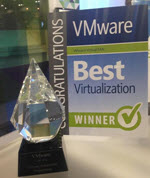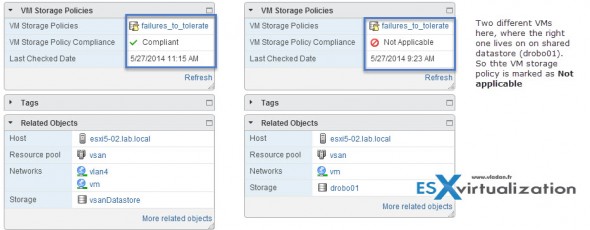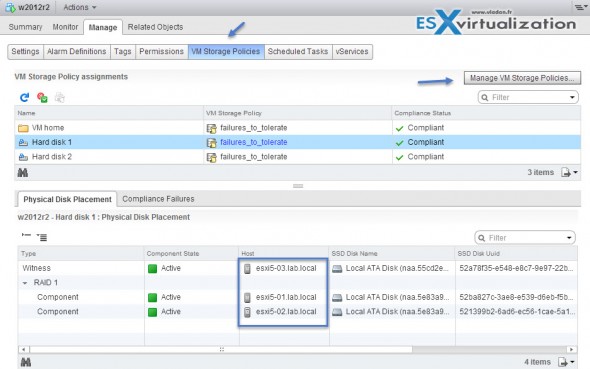Since I'm running my test home-brewed VSAN installation, every day I'm able to discover how this solution is actually working and what's possible and what's not. You could already read my article how to create your first VM storage policy, as after VSAN's activation this is the second step – By default VSAN does not show any VM storage policies – How to create them?
New readers coming to the blog might also want to have a look at My VSAN Journey – All done! article where I summarize the actual setup of my lab.
So today I worked with VMs which lives on different datastores. There are some that are on “standard” shared storage datastores (I won't call those legacy just yet) and there are VMs which are on the vSAN datastore.
Here is a VM which for example lives on a VSAN datastore and on the right, there is a VM which lives on standard datastore. Both VMs have the same VMs storage policy but to apply this storage policy, only the VSAN datastore has the capability. You can click to enlarge.
When wanting to modify a storage policy for a VM (BTW, it can be done VM running!), you would go for it by Selecting the VM > Manage > VM Storage Policies.
You can see that by selecting a hard disk you will see on the lower pane, that the disk is spread across 3 ESXi hosts which participate in the VSAN cluster. The failures to tolerate VM storage policy is currently applied.
If you want to change that, for another storage policy you can click the Manage VM storage policy button where you can select another storage policy and click the Apply to disks.
Three host cluster is a minimum. With more hosts participating in VSAN cluster you could change the failures to tolerate with higher number, but 3 hosts allows only to spread the VMs objects the way that the the witness object is on one host and the disk is located on other 2 hosts.

VSAN technology is certainly disrupting the storage world. It's not the only one out there as there are other storage players, but it's the one which is “baked” into the hypervizor, so great are the chances that sooner or later gets adopted by large and small enterprises.
Small businesses can benefit as well even if 3 hosts for remote sites are quite overkill you tell me, but there might be some cheaper nodes which might fit into this situation as well.
With that said I'm certainly very impressed so far by the performance in the lab even if I haven't done any measurements, but having the possibility to create a VSAN datastore which is spread through three hosts, with almost single click, is impressive.
Here is a video from VMware showing the changing the VM storage policy on the fly:



